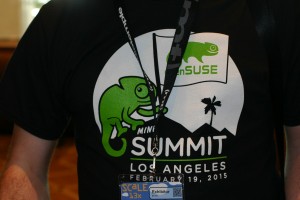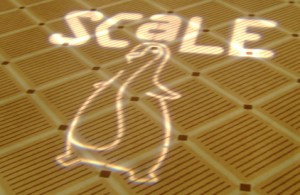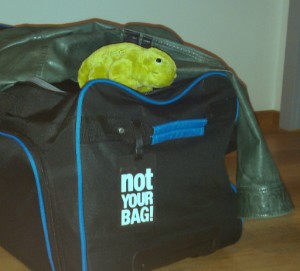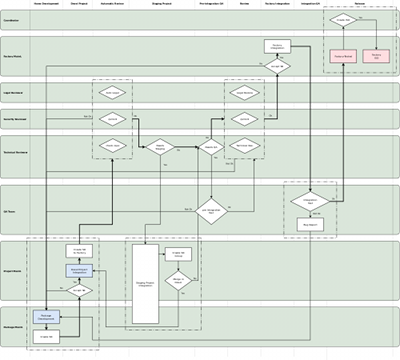As you might know, we are focusing our development efforts in two fronts, namely openQA and staging projects. As we just started we don’t have fireworks for you (yet) but we did some solid ground work that we are going to build upon.
Working on openQA
We are organizing our daily job in openQA into highly focused sprints of two weeks. The focus of the first sprint was clear: cleanup the current codebase to empower future development and lower the entry barrier for casual contributors, which can be translated as “cleaning our own mess”. We created some tasks in progress, grouped in a version with a surprising and catchy name: Sprint 01.
Got my mojo workin’
Up to now, openQA web interface was written using just a bunch of custom CGI scripts and some configuration directives in Apache. We missed a convenient way to access to all the bell and whistles of modern web development and some tools to make the code more readable, reliable and easier to extend and test. In short, we missed a proper web development framework. We evaluated the most popular Perl-based alternatives and we finally decided to go for Mojolicious for several reasons:
- It provides all the functionality we demand from a web framework while being lightweight and unbloated.
- It’s stated as a “real time framework” which, buzzwords apart, means that is designed from the ground to fully support Comet (long-polling), EventSource and WebSockets. Very handy technologies for implementing some features in openQA.
- It really “feels” very close to Sinatra, which makes Ruby on Rails developers feel like at home. And we have quite some Rails developers hanging around, don’t we? Just think about OBS, software.o.o, WebYast, progress.o.o, OSEM, the TSP app…
- Mojolicious motto is “web development can be fun again”. Who could resist to that?
We’ve now reached the end of the sprint and we already have something that looks exactly the same than what we had before, but using Mojolicious internally. We are very happy with the framework and we are pretty confident that future development of openQA will be easier and faster than ever. OpenQA has mojo!
The database layer in openQA
Another part that we worked on during first sprint was the database layer. The user interface part of openQA use a SQLite database to store the jobs and workers registered in the system. The connection between the code and the database was expressed directly in SQL using a simple API.
We have replaced this layer with another equivalent that uses an ORM (Object-relational mapping) in Perl (DBIx::Class). Every data model in openQA is now a true object that can be created, copied and moved between the different layers of the application. Quite handy.
To make sure we don’t forget anything, we created a bunch of tests covering the whole functionality of the original code, running this test suite after each step of the migration. In this way we have achieved two goals: we now have a simple way to share and update information through the whole system and we can migrate very easily to a different database engine (something that we plan to do in the future).
What to do with staging
Over the time, coolo had accumulated quite some scripts that helped him with Factory. Most of them are actually related to something we are doing right now: the staging projects. So in the end we basically migrated all relevant ones to github and one by one we are merging their functionality to staging plugin. We also experimented with test frameworks that we could use to test the plugin itself, selected few and we even have a first test! The final plan is to have the whole plugin functionality covered with a proper test suite, so we will know when something breaks. Currently, there is a lot of mess in our repo and the plugin itself need big cleanup, but we are working on it.
Contributions are welcome
If you want to help but wonder where to start, we identified tasks that are good to dive into the topic and named them “easy hacks”: mostly self contained tasks we expect to have little effort but we lack the time to do right now. Just jump over the list for openQA or staging projects.
For grabbing the code related to staging project, you only need to clone the already mentioned repository. The openQA code is spread in several repositories (one, two, three and four), but setting up your own instance to play and hack is a piece of cake using the packages available in OBS (built automatically for every git push).
If you simply want to see what we are doing in more detail, take a look at progress.o.o, we have both openQA and Staging projects there.
We are having a lot of fun, and we encourage you to join us!




